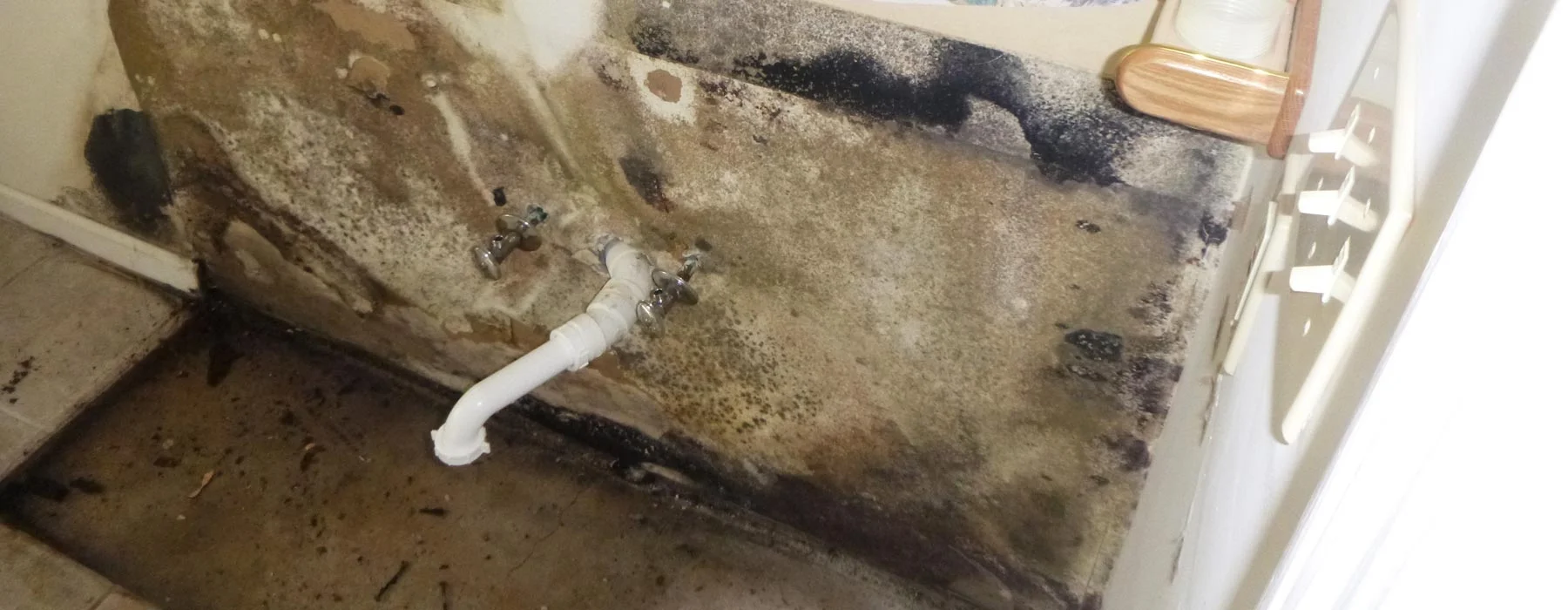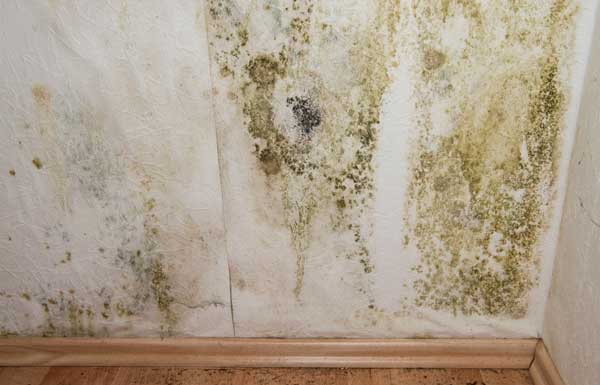The Effects of Mold on Your Health
Some types of mold can have lasting, serious effects on your health, especially if exposed to high concentrations, or over long periods of time. Even short-term exposure to mold can cause sinus congestion, coughing, asthma flare-ups, and allergic reactions. A study from the University of Arizona shows 100% of homes have some kind of mold in them, so most people have some tolerance. The problem is that people have different tolerance levels, and different ability to clear mycotoxins produced by some molds from their bloodstream. So while one person may be experiencing serious effects, others may not experience any effect at all.
Since mold affects people differently, it is hard to give a definitive answer about what level of exposure is safe. Many experts disagree on what is safe, and what the best practice is. In general, it is when the mold is allowed to flourish, especially when consuming chemical-laden products, and people are exposed for lengthy periods of time, that can be detrimental to your health. Molds will grow anywhere there is enough moisture, proper temperature, and a food source. With this in mind, mold colonies are common in kitchens, basements, and bathrooms on cellulose containing building materials and contents, such as wood, drywall paper, insulation paper, clothes, leather goods, and many other items. Some types of mold are extremely hazardous to your health. Mold can be hard to detect, and determining the health risk from a particular patch of mold is even harder.
Some of the potential health side effects of exposure to mold include:
Trouble breathing
Coughing and wheezing
A headache
Rashes and dry skin
Watery eyes
Itchy eyes, nose, and throat
Mold Types
There are thousands of species of mold on the planet. Each type of mold needs water, an organic source for food (ex. drywall), and warmth to grow. All molds release spores into the air—these spores are then inhaled or come into contact with the human skin, which is where health problems can begin.
There are three categories of molds that can be harmful to people:
Allergenic Mold: This typically causes a reaction in people with allergies, including asthma attacks.
Pathogenic Mold: This variety causes health problems in people already suffering from an acute illness.
Toxigenic Mold: The most dangerous type of mold, “toxic mold” produces mycotoxins that cause extremely dangerous health conditions. Toxic mold can be deadly under certain circumstances.
Common Types of Household Mold
Household mold varieties typically can be divided into rooms of the house. Mold & Bacteria Consulting Laboratories identified the most common molds in kitchens and bathrooms, on wallpaper, on carpets and mattresses, and in basements. These mold range from needing a large spore count in order to be harmful to ones that are extremely dangerous and any spore count present is very dangerous.
Most common household molds:
Aspergillus: This species of mold has hundreds of different strains and is most commonly found in bathrooms, kitchens, and basements. It can also be present in damp potted plants, building materials, and carpet.
Cladosporium: This mold species is a common trigger for asthma attacks and allergic reactions. It is commonly found on decaying plants and indoor strains tend to grow on wet building materials and HVAC fans.
Stachybotrys: Commonly referred to as “black mold,” this is one of the most well-known—and most dangerous—mold varieties that can grow in homes. It is most often found in dark, humid areas. The most common signs of black mold are a musty smell, dark rings and water spots, and visible mold colonies.
Black Mold Exposure Symptoms
One surefire sign of black mold exposure is chronic respiratory issues—including coughing, wheezing, sneezing, and irritation of the mouth and throat. Other symptoms include constant headaches and fatigue. Everyone is susceptible to black mold’s many nasty side effects, including pets. Pregnant women, children, the elderly, and people who are already sick are the most vulnerable to black mold.
Prolonged exposure to black mold can cause even more severe symptoms. Nausea, vomiting, and bleeding in the lungs and nose are all signs of black mold exposure or black mold poisoning. In severe cases, black mold can cause organs to shut down—including the brain—leading to death. Black mold is a neurotoxin, meaning spores attach to the brain’s neurons and can cause mood swings and tremors. Black mold spores also suppress the immune system, making people more vulnerable to other illnesses. It is important to note that, like other molds, the black mold colony itself is not toxic. The dangerous part is the mycotoxins that are given off by black mold.
Testing For Mold
Mold can be challenging to find, and even more difficult to remove from your home. If you are feeling sick or notice large mold colonies in your home, you need to call mold removal professionals immediately. Many home mold testing kits are unreliable, it's best to hire a trusted Certified Industrial Hygienist or in the State of Texas, a licensed Mold Assessment Consultant who can not only test your home for high levels of mold growth but also write a protocol for a proper clean up procedure to be followed by a professional.
The mold removal professional can then provide you with an accurate quote based on the Industrial Hygienist recommendations to get your home back to a safe occupancy level.
How to Prevent Mold Growth
As mentioned earlier, mold is everywhere, including outside. Which is why Industrial Hygienist always tests outside the affected structure to get a baseline level of what is acceptable inside a structure. It is impossible to completely eliminate mold from your home. However, you can dramatically reduce the amount of mold and future growth of mold in your home by reducing and controlling the moisture.
Some ways to control moisture in your home include:
Monitor humidity: make sure your home is dry. Ideal humidity levels to prevent mold growth are at or below 50%.
Use exhaust fans and vents: Turn on exhausts in your kitchen, bathroom, and the laundry room, especially when cooking or taking a shower. If you don’t have an exhaust fan, open the nearest window to provide ventilation.
Clean up spills immediately: Spills provide a breeding ground for mold. The longer you let them sit, the better chance moisture has to soak into carpets and floorboards.
Fix leaks: Leaking pipes are a leading cause of mold buildup, especially in bathrooms and basements. Take note of areas with plumbing in your home (like under sinks, behind toilets, and near air conditioners) and check them regularly. Fix any leaks immediately.
Run HVAC: Your HVAC acts like a dehumidifier removing moisture from the air, make sure you keep your HVAC system running year round.Mold and Your Health
While mold can be difficult to control, it is worth your time. The potential health side effects are simply not worth the risk. While some molds are harmless, it is unlikely you can identify each strain of mold in your home without laboratory testing.
Leaving mold unattended puts you and your family at risk for chronic headaches, asthma, nausea, and more serious conditions. Ultimately, the best bet in preventing mold-related illness is to prevent mold colonies from forming in the first place. Your best protection is to keep your home dry, maintain plumbing, and call the experts immediately if you notice mold growing in your home.
Mold and Your Health
While mold can be difficult to control, it is worth your time. The potential health side effects are simply not worth the risk. While some molds are not as harmful as others, it is unlikely you can identify each strain of mold in your home without laboratory testing.
Leaving mold unattended puts you and your family at risk for chronic headaches, asthma, nausea, and more serious conditions. Ultimately, the best bet in preventing mold-related illness is to prevent mold colonies from forming in the first place. Your best protection is to keep your home dry, maintain plumbing, and call the experts immediately if you notice mold growing in your home.




